Note
Go to the end to download the full example code.
Smooth and sparse OT example
Note
Example updated in release: 0.9.1.
This example illustrates the computation of Smooth and Sparse (KL an L2 reg.) OT and sparsity-constrained OT, together with their visualizations.
# Author: Remi Flamary <remi.flamary@unice.fr>
#
# License: MIT License
# sphinx_gallery_thumbnail_number = 5
import numpy as np
import matplotlib.pylab as pl
import ot
import ot.plot
from ot.datasets import make_1D_gauss as gauss
Generate data
Plot distributions and loss matrix
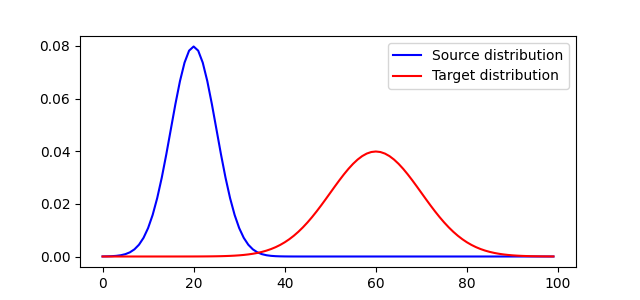
<matplotlib.legend.Legend object at 0x7f6f3558cdc0>
pl.figure(2, figsize=(5, 5))
ot.plot.plot1D_mat(a, b, M, "Cost matrix M")
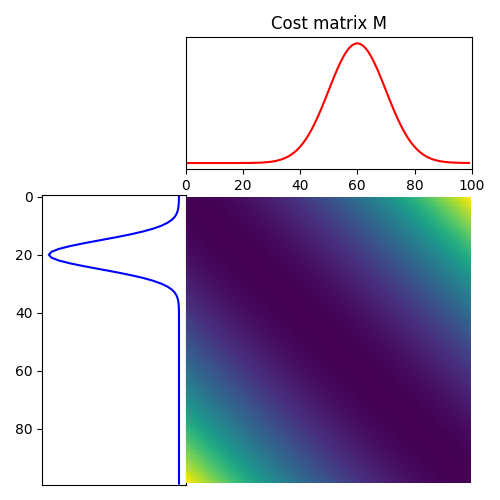
(<Axes: >, <Axes: >, <Axes: >)
Solve Smooth OT
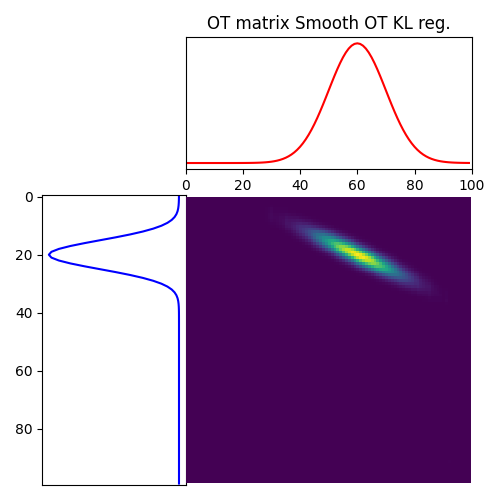
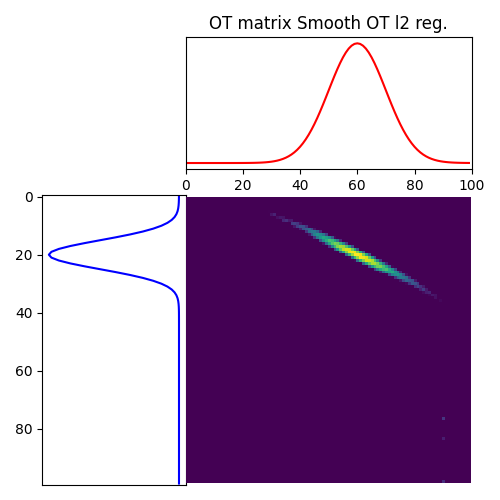
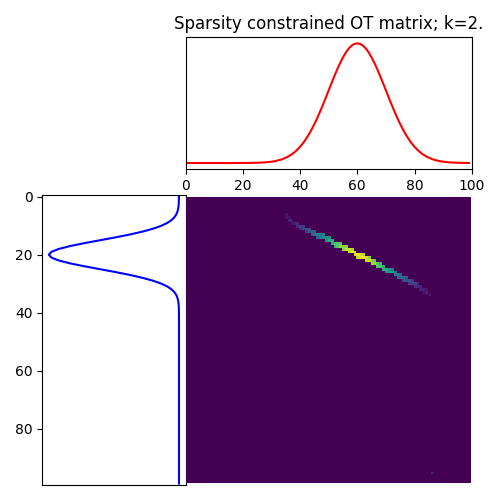
Total running time of the script: (0 minutes 1.354 seconds)